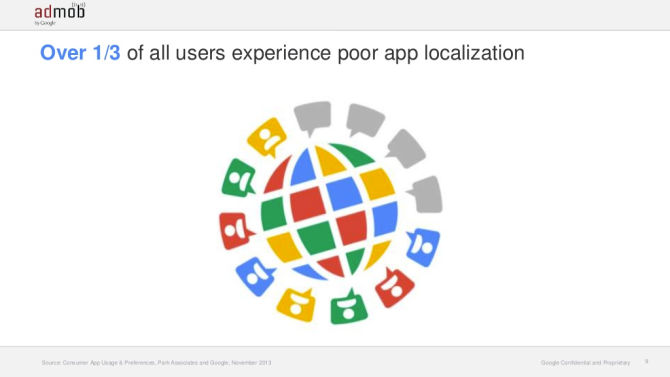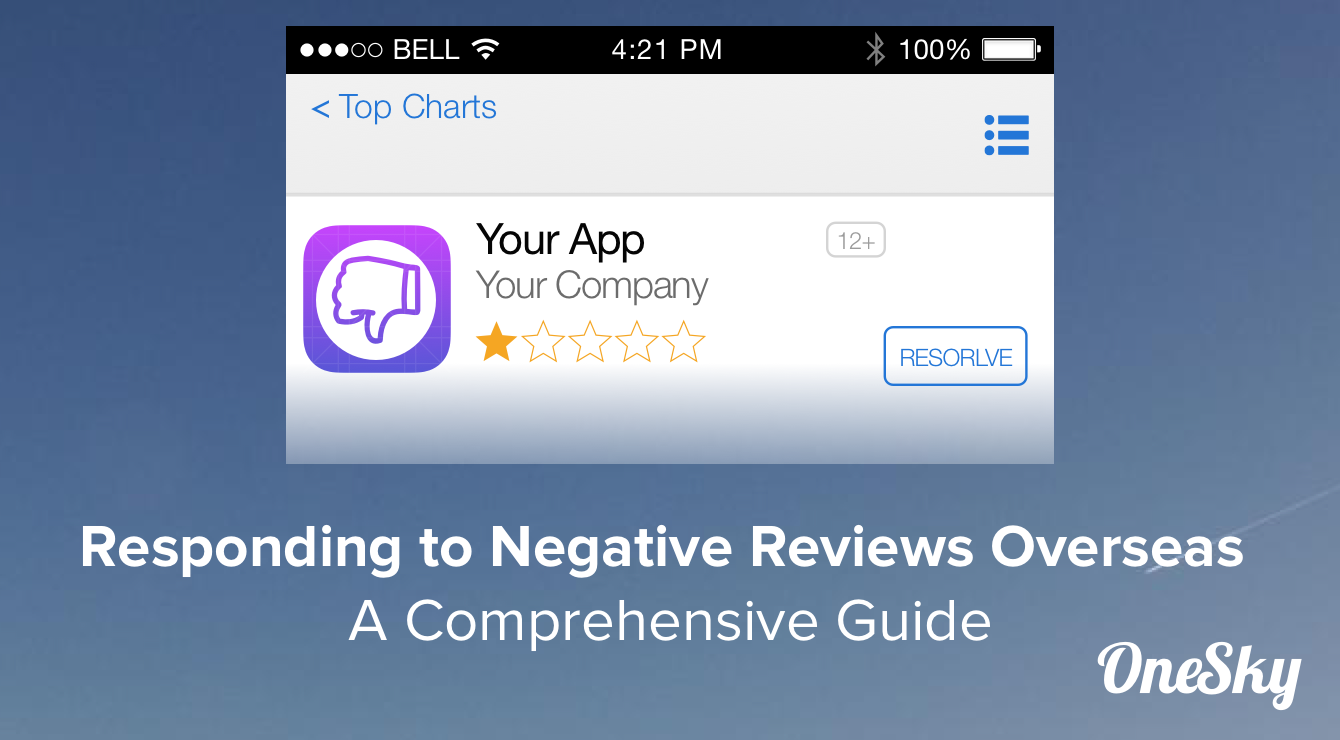Getting Negative App Reviews Abroad? What You Need to Know.
Overcome the language barrier in app store reviews
It’s no secret: bad app store ratings can damage your download rates. But even the best app will occasionally get a bad review. It’s almost inevitable.
That’s true when you take your app abroad, too. And while you may have a bulletproof strategy for dealing with negative reviews at home, bad reviews in foreign languages may leave you puzzled, frustrated with the language barrier, or unsure of how to respond.
But don’t worry! In this post, we’ll share some key tips for dealing with negative app reviews in foreign languages.
1. Treat every complaint as an expression of care
Our first tip applies in every country, and in every language: a complaint is, ultimately, an expression of care. After all, the user could have just set your app aside and gone away. As the old rule of thumb goes, “Nine out of ten unhappy customers never say a word. They just never come back.”
Negative reviewers, on the other hand, took the time to let you know what’s wrong. Try to appreciate them.
2. Translate feedback
When feedback comes in another language, you first need to figure out what’s going on. When it comes to localizing app content, we strongly advise against machine translation. But, for just a few lines of user-generated feedback, Google translate is a helpful tool. Remember, though, that machine translation can be confusing, especially when slang is involved. Having a bilingual teammate or a good translator on call is always helpful.
When you have massive amounts of feedback to handle, consider using an app store analytics platform, such as Sensor Tower. They’ll save you time by performing the bulk of the translation work.
3. Understand their needs
Regardless of their preferred language, most unhappy customers have the same few issues. App Annie provides a helpful framework for the five major types of issue:
- User Experience – “These menus are counterintuitive.”
- Functionality – “Why won’t the app work!?”
- Improvements – “I’ll rate this higher when they add new features.”
- General Impression – “This app is awful.”
- Matters of Principle – “I don’t approve of this company’s business practices.”
Overseas users, though, may have some specialized concerns.
Distinguish local needs from generic needs
Some issues are shared by users around the world. Others are unique to a particular market. In general, you’ll want to distinguish between local and generic complaints.
Consider China, where the app market is quite different from the United States:
| Generic | Local (China) | |
| User Experience | “These menus are counterintuitive.” | “The menus are untranslated.” |
| Functionality | “Why won’t the app work!?” | “I can’t make any in-app purchases in Google Play.” |
| Improvements | “I’ll rate this higher when you add new features.” | “I’ll rate this higher when you add integration to WeChat.” |
| General Impression | “This app is awful.” | “I don’t like this app as a Chinese.” |
| Matters of Principle | “I don’t approve of this company’s business practices.” | “This company’s business practices don’t work in China.” |
Feedback tracking tools, such as a pivotal tracker, are great for organizing feedback. Just remember to keep special sections for local complaints.
Prioritize!
Your resources are limited. You can’t respond to every single piece of user feedback.
By gathering together generic issues, you’ll be able to identify larger problems with effects across all your different markets. In terms of local feedback, you’ll want to prioritize issues in terms of how important a specific local market is to your app, and how much the improvement will distract you from your original development roadmap.
3. Respond to negative user feedback
Most best practices apply around the world
You probably have your own strategies for replying to negative reviews—being proactive, replying honestly, and so forth. These strategies will work around the world. And if you’re looking for more tips in that area, check out these guides from Help Scout and Apptentive:
- Help Scout: 15 Tips for Successfully Handling Customer Complaints
- Apptentive: 5 ways to turn your mobile app’s haters into evangelists
However, there are a few best practices to keep in mind when you’re responding to feedback from non-English speaking users:
1. Speak local
If a customer has given you feedback in her native language, she’ll probably want a reply in that language, too. In this case, Google translate is not a great option. Instead, you’ll want to have a trustworthy team member or a translation service provider who can help out. And remember: just because someone is bilingual doesn’t mean that they’re a good translator.
2. Use smiley emojis
Some emojis are culture-specific. But the smiley face is universal, and it is a sign of friendliness. Use it well, and use it often!
3. Use plain English
Your translator will have an easier time if you draft your response in plain English. Avoiding idioms and complex expressions will make for faster, more reliable translation.
4. How to reduce the numbers of negative app reviews
When possible, prevention is ideal. Be proactive with your localized app, and you’ll reduce the number of negative reviews.
Prepare a multilingual help desk
A comprehensive help desk is one way to calm angry users. That way, they can find helpful, friendly content before they go off to bombard your support email or post a negative comment.
When you take your app overseas, it’s important to localize your help desk, too. Fortunately, a lot of help desk software, such as Freshdesk, lets you translate your FAQ easily.
Add important info to your app store description
Sometimes, a lot of users will be upset about the same thing—a bug in your app, for example, or a feature that was removed after an update. Your app store listing is a great place to address past issues and talk about changes in the app. So, if you’ve localized your app store description, don’t forget to keep it updated with this key information, too.
Localize your app, and localize it well
According to a recent study from Google, one in three app users report that they’ve dealt with a poor app localization experience. Bad or non-existent localization is a major source of negative app reviews in foreign languages.

Over one third of app users experience bad localization.
Kickstart your localization project early, and you’ll be ready to serve happy users around the world.
Wrapping up
Did you encounter any experience of dealing with negative app store review abroad? Anything to share? Let us know!
Also download our guide to pre-translation to localize your app well.
[contact-form-7 id=”1333″ title=”blog post cta: pre-translation”]



 Written by -
Written by - 




 Written by
Written by 


